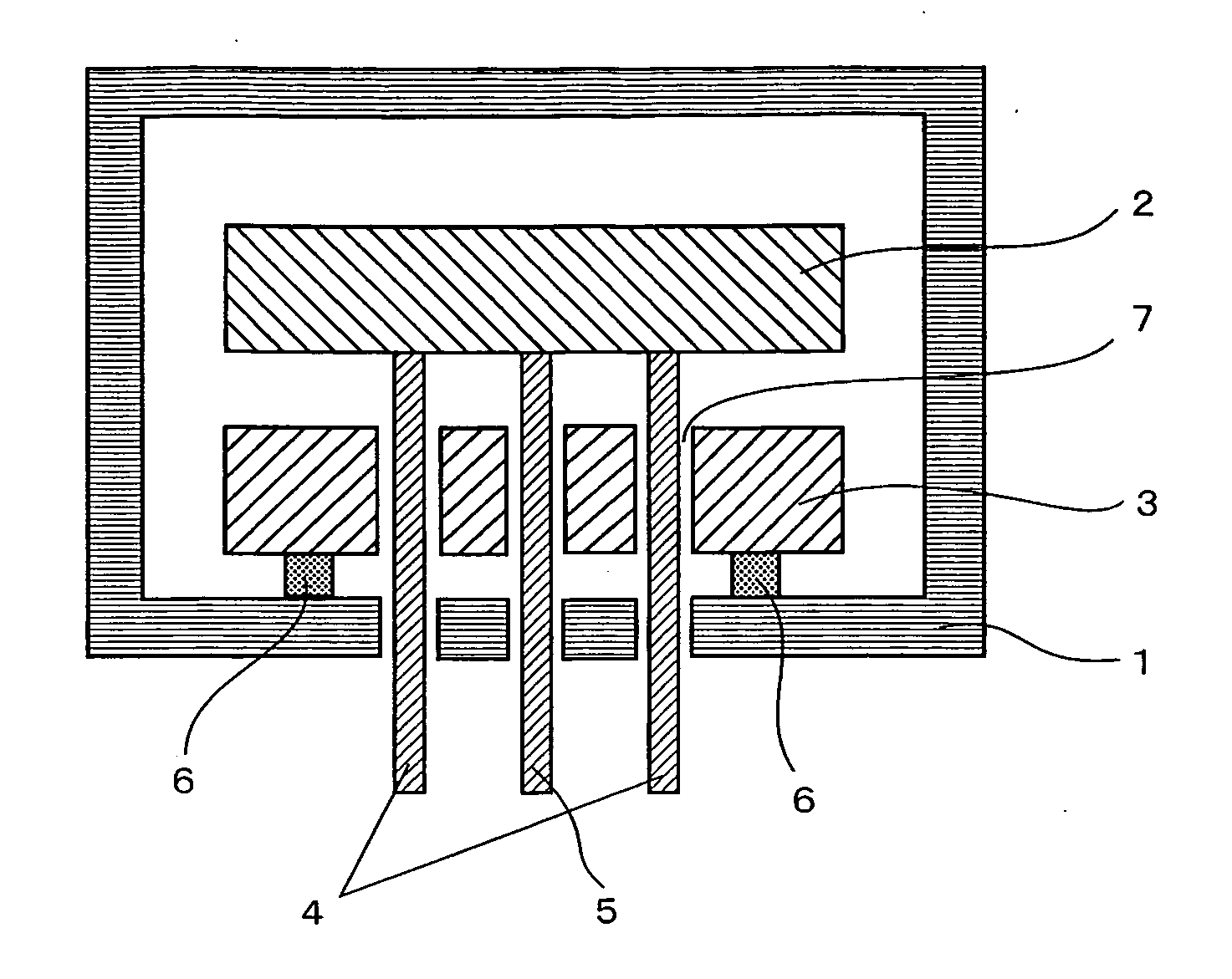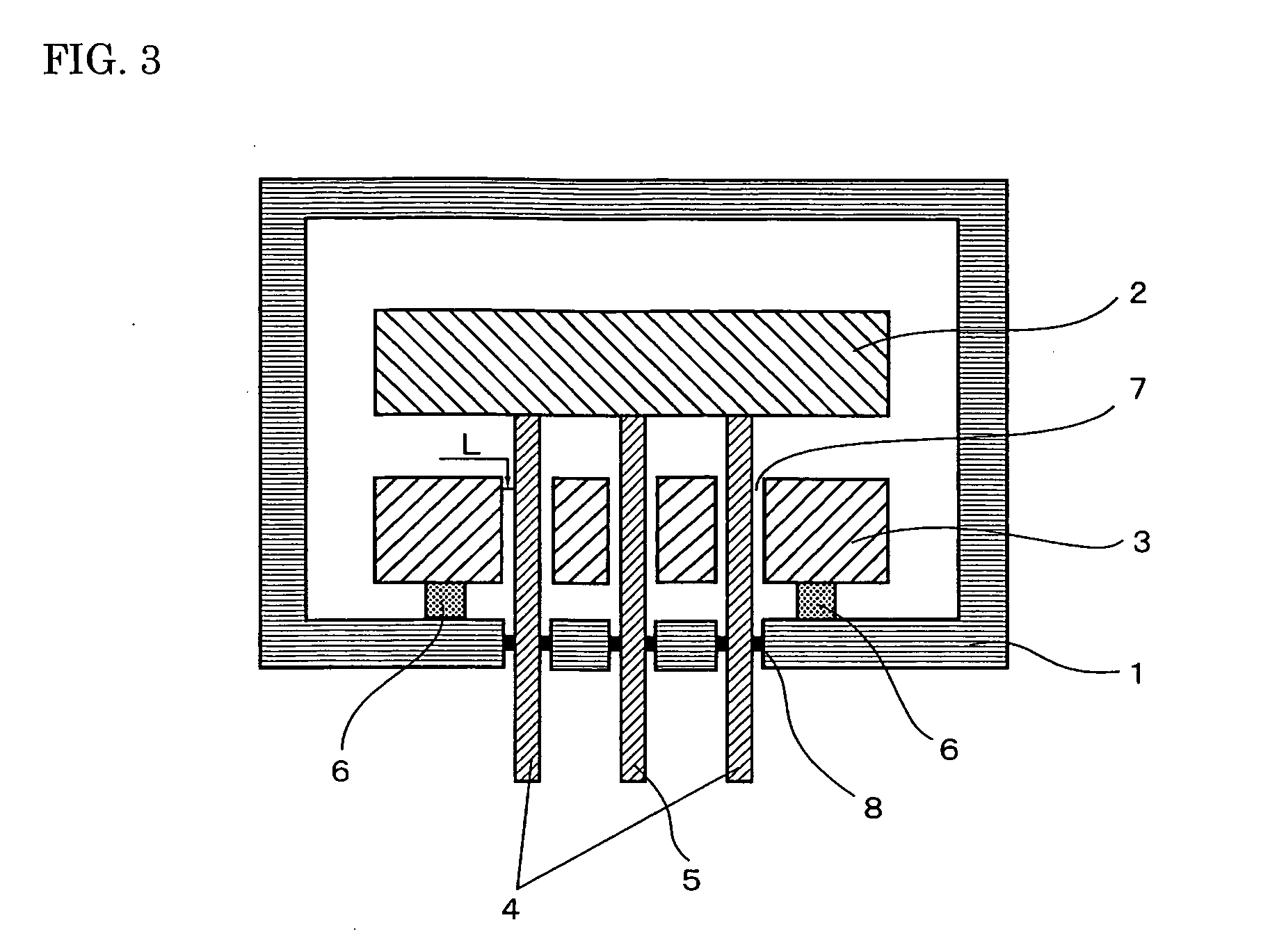Semiconductor-producing apparatus
- Summary
- Abstract
- Description
- Claims
- Application Information
AI Technical Summary
Benefits of technology
Problems solved by technology
Method used
Image
Examples
example 1
[0069] An aluminum nitride sintered body was produced by the following process. First, 100 weight parts of aluminum nitride powder and 0.6 weight parts of yttrium stearate powder were mixed. Next, 10 weight parts of polyvinyl butyral as a binder and 5 weight parts of dibutyl phthalate as a solvent were mixed into the foregoing mixed powder. The resultant mixed material was processed by the spray-drying method to produce granules. The granules were press-formed and degreased in a nitrogen atmosphere at 700° C. The formed body was sintered in a nitrogen atmosphere at 1,850° C. to complete the process. The aluminum nitride powder used had an average particle diameter of 0.6 μm and a specific surface area of 3.4 m2 / g. The produced aluminum nitride sintered body was machined so as to have a diameter of 330 mm and a thickness of 15 mm.
[0070] A tungsten paste was produced by using 100 weight parts of tungsten powder having an average particle diameter of 2.0 μm, one weight part of Y2O3, f...
example 2
[0077] Five types of cooling blocks were prepared that were made of different materials as shown in Table II. They had a distance of 0.5 mm from the inner surface of the through hole of the cooling block to the penetrating object such as the electrode or thermocouple. The conditions other than the material of the cooling block, such as the heater and the coolant-flowing path, were the same as in Example 1. The temperature variation in the heater was measured at 400° C. and 200° C. The results are shown in Table II. The thermal conductivity of the material of the cooling block is also shown in Table II.
TABLE IIThermalconductivityNo.Material of cooling block(W / mK)ΔT1 (° C.)ΔT2 (° C.)8Nickel-chromium steel174.18.59Nickel steel302.45.010Pure iron752.44.911Cast aluminum1001.63.212Pure aluminum2001.53.1
[0078] As can be seen from Table II, when the thermal conductivity of the material of the cooling block was increased to 30 W / mK or more, the uniformity of the temperature distribution of...
example 3
[0079] Three types of heaters were produced with different materials through a method similar to that used in Example 1. They were made of aluminum oxide, silicon carbide, and silicon nitride. The heater made of aluminum nitride produced in Example 1 was also used in this example. That is, four types of heaters were used in total. The distance from the inner surface of the through hole of the cooling block to the penetrating object such as the electrode or thermocouple was 0.5 mm. The material of the cooling block was pure aluminum. As with Example 1, the temperature variation in the heater was measured at 400° C. and 200° C.
[0080] In addition, after the temperature of the heater was raised to 400° C. when measured by the thermocouple, the temperature, 400° C., was maintained for 30 minutes to achieve temperature stabilization. Then, the current feeding was stopped. The cooling block to which cooling water was fed was brought into contact with the heater to cool it to 50° C. The te...
PUM
| Property | Measurement | Unit |
|---|---|---|
| Distance | aaaaa | aaaaa |
| Distance | aaaaa | aaaaa |
| Temperature | aaaaa | aaaaa |
Abstract
Description
Claims
Application Information
 Login to View More
Login to View More - R&D
- Intellectual Property
- Life Sciences
- Materials
- Tech Scout
- Unparalleled Data Quality
- Higher Quality Content
- 60% Fewer Hallucinations
Browse by: Latest US Patents, China's latest patents, Technical Efficacy Thesaurus, Application Domain, Technology Topic, Popular Technical Reports.
© 2025 PatSnap. All rights reserved.Legal|Privacy policy|Modern Slavery Act Transparency Statement|Sitemap|About US| Contact US: help@patsnap.com



